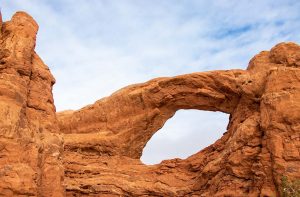We really enjoyed our time snorkeling in Cabo San Lucas, Mexico. So much so, that we decided to share our full experience in this blog. We have organized the blog with this convenient table of content so you can click to your preferred section, but I would suggest reading the whole story, it was a fun journey.
- Cabo San Lucas, Mexico for Spring Break
- Arriving in Cabo San Lucas, Mexico
- Snorkeling in Cabo at Pelican Rock
- Final Thoughts on Snorkeling in Cabo
- Frequently Asked Questions about Snorkeling in Cabo San Lucas, Mexico
- Where are the best snorkeling spots in Cabo?
- What marine life can be observed while snorkeling in Cabo?
- Is snorkeling in Cabo suitable for beginners?
- Are snorkeling excursions available in Cabo?
- When is the best time for snorkeling in Cabo?
- Are there snorkeling tours that include other activities in Cabo?
- Can snorkelers encounter whale sharks in Cabo?
- What equipment is needed for snorkeling in Cabo?
Spring break is a symbolic time in the United States. It marks the middle of the Spring semester for college students, a time to relax and unwind, a time to find some sunshine for those of us stuck in the midwestern winter tundra, and—perhaps most importantly—a time to feel alive again after a cold, long winter. It was that time of year again and I desperate needed some excitement in my life. My need for excitement led to some incredible off-the-beaten-track snorkeling in Cabo San Lucas, Mexico, and I would not have had it any other way.
Cabo San Lucas, Mexico for Spring Break
After years of sacrificing spring break in college, I finally decided to take a more traditional vacation in 2019 while I was a PhD student. My destination ended up being Cabo San Lucas in the Mexican state of Baja California Sur, commonly known as “Cabo.” Cabo is generally thought of as a party spot for young spring breakers, but most reviews also highlight the plethora of family-friendly fun to be had from whale watching and snorkeling, to all-inclusive resorts with private beaches.
I booked the trip to Cabo with my partner just four days before our departure date. We had been contemplating investing in a trip for spring break basically all year, and we finally decided to pull the trigger on a decently affordable travel package we found through Expedia (dot com). We bought our tickets on Wednesday and set off for our Cabo adventure Saturday morning!
As certified scuba divers, we always plan on at least snorkeling when we find our way to the ocean. We knew from the get-go we’d be packing our masks and snorkels and searching for the best beach snorkeling we could find. Beach snorkeling is great because if you have your own snorkel gear—and if there’s no beach or parking fees—it’s completely free! You get to enjoy the underwater world without the stress of a boat full of strangers, or the cost of a snorkeling tour. With that in mind, when we read about snorkeling at Pelican Rock, we immediately knew we wanted to take the path less traveled to get there.
Arriving in Cabo San Lucas, Mexico
We arrived late Saturday night, and set out for our first Cabo adventure in the Sunday sunshine. We packed our gear for the day: snorkels, masks, GoPro—our essentials for a day of exploring all the water has to offer. Having done a bit of research before heading out, we knew that most people got to Pelican Rock by taking a glass bottom boat from the Marina.
This is still a fairly affordable option that only costs about $10 US dollars for two people. (Prices will vary depending on how many are in your party.) However, we also read that the more adventurous travelers hike across the rocky shoreline from Playa Pública to Pelican Rock (off Playa Pelícanos).
Snorkeling in Cabo at Pelican Rock
We had a hard time finding detailed information on the hike, like whether or not we should wear tennis shoes or how difficult it was. Some information told us it was a slightly dangerous hike that only the locals braved, while other travelers painted a picture of a leisurely walk across the rocks that was more than doable.
After having made the trek ourselves, I would say it falls somewhere in between. It is less than a mile from Playa Pública to Playa Pelícanos—which covers your route from the marina in town to Pelican Rock—but you certainly have to be careful with your footing. I would by no means call it a leisurely walk. It is definitely a hike.
Neither of us brought close toed shoes We both had flip-flips on and it quickly became apparent that it was safer to just go barefoot. While this worked out fine, we both ended up with a few scrapes and gashes on our feet from the rocks, but it was nothing the saltwater couldn’t heal. If you have water shoes with a decent tread or hiking sandals (e.g., Chacos or Tevas), I would strongly recommend you wear those!
Be sure to Pay Attention to the Ocean Tide
On our hike over, the tide was much higher, leaving us having to either climb higher to avoid getting wet or swim across the pool of water the tide brought in. Because we had phones and other possessions we did not want getting wet, we had to be creative. We tried climbing higher, but there came a point where we could not avoid the water any longer. My parent Luke gave me his daypack while he swam across, and I tossed his and my pack over to him once he found the shore again.
As usual, Luke provided the encouraging coaching I needed to make my way across the small but mighty body of water. We had a very small, 1.5 liter dry bag for our phones, but a larger dry bag would have definitely been useful for keeping our clothes and other belongings dry.
Observing the Locals on our Hike
That section of the hike was by far the sketchiest, but it was helpful to see the locals making their way back and forth as we hiked (much more slowly) across the same rocks. They provided elegant examples of the best path to take, which was much appreciated. All the locals we saw impressively walked across those rocks like it was a perfectly even sidewalk, while I mostly bear crawled, using all fours to keep my balance. But hey, we made it there safely and the short but exhausting hike was well worth it!
Making it to Pelican Rock for Great Snorkeling in Cabo
We knew we made it to Pelican Rock when we encountered a local man renting out snorkel gear, including life vests. We had our snorkel gear, but he talked us into renting a couple of life vests. We could have gone without, but we are always happy to support local people when we are traveling. Another tell-tale sign you have made it to your destination is a giant rock at the end of a buoy rope barrier sectioning off the safe snorkeling area. There are many areas along the shore in Cabo that are not safe for swimming because of aggressive waves and rocky shores, so make sure you have made it to the right spot.
As you can see in the videos, there are tons of fish in the area to admire while you swim out to Pelican Rock for some sunbathing, cliff jumping, or a little of both! Our hike back was much less treacherous since the tide was much lower. We didn’t have to swim across any sections and could even walk across sand instead of rocks at certain points!
Final Thoughts on Snorkeling in Cabo
If you are deciding whether or not to make the hike to Pelican Rock, rather than taking the more traditional route via a glass bottom boat, we highly recommend the adventure! It made for a rewarding day of exploring the shoreline and appreciating the helpful local people. The refreshing ocean water and playful sites of fish going about their days was that much sweeter having worked a little harder to get there. Plus, the thrill of adventure felt amazing in contrast to the graduate school environment I was escaping.
The Best Mexican Food in Lake Havasu City
Frequently Asked Questions about Snorkeling in Cabo San Lucas, Mexico
Where are the best snorkeling spots in Cabo?
Some of the best snorkeling spots in Cabo include Santa Maria Bay, Chileno Bay, and Pelican Rock. These locations offer clear waters and diverse marine life.
What marine life can be observed while snorkeling in Cabo?
Snorkelers in Cabo can observe a variety of marine life, including colorful fish, sea turtles, rays, eels, and occasionally, small sharks. The region’s rich biodiversity makes for an exciting snorkeling experience.
Is snorkeling in Cabo suitable for beginners?
Yes, Cabo offers snorkeling opportunities for all skill levels, including beginners. The calm and clear waters in certain areas make it an ideal destination for those new to snorkeling.
Are snorkeling excursions available in Cabo?
Yes, there are various snorkeling excursions available in Cabo. These tours often include equipment rental, guided snorkeling trips, and sometimes visits to multiple snorkeling sites.
When is the best time for snorkeling in Cabo?
The best time for snorkeling in Cabo is during the warmer months, typically from late spring to early fall. During this period, the water is warmer, and visibility is generally excellent.
Are there snorkeling tours that include other activities in Cabo?
Yes, many snorkeling tours in Cabo also include additional activities such as boat rides, wildlife watching, and visits to famous landmarks like El Arco (The Arch).
Can snorkelers encounter whale sharks in Cabo?
While whale sharks are not commonly found in the waters around Cabo for snorkeling, there are occasional sightings. However, specific whale shark tours may be available during certain seasons.
What equipment is needed for snorkeling in Cabo?
Basic snorkeling equipment includes a mask, snorkel, and fins. Many snorkeling tours in Cabo provide rental equipment as part of the excursion package, making it convenient for visitors.





